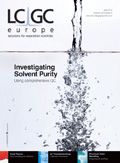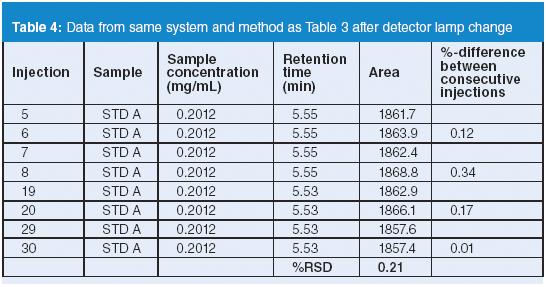Event News
Over the years, the International Symposium on Capillary Chromatography (ISCC) has established its reputation as a forum for microcolumn separation techniques. Since the first meeting in Hindelang in 1975, the most important developments in capillary gas chromatography, microcolumn liquid chromatography and electromigration techniques have been presented in this symposium series.
Over the years, the International Symposium on Capillary Chromatography (ISCC) has established its reputation as a forum for microcolumn separation techniques. Since the first meeting in Hindelang in 1975, the most important developments in capillary gas chromatography, microcolumn liquid chromatography and electromigration techniques have been presented in this symposium series.

This year the Palazzo dei Congressi in Riva del Garda, Italy, will accommodate the 34th meeting from 1–4 June 2010. The four-day event will feature recent findings from leading academic and industrial experts in the form of lectures and posters. The conference offers sessions on capillary gas chromatography, microcolumn liquid chromatography, electromigration methods and microfabricated analytical systems, which are expected to cover lab-on-a-chip, column technology, coupled and multidimensional techniques, comprehensive techniques, hyphenated techniques, sampling and sample preparation, trace analysis and automation.
Application sessions include environmental applications, energy/petrochemical/industrial applications, biomedical/pharmaceutical applications and the analysis of natural products, food, flavours and fragrances. Workshop-seminars of instrument manufacturers and an extensive exhibition of instrumentation, accessories and supplies will run in parallel to the scientific programme.
At the meeting, the 2010 Marcel Golay Award will be presented in recognition of outstanding contributions in the field of separation science. Outstanding research work presented as oral or poster contributions by youngsters will be awarded with the Leslie Ettre Award for research on capillary gas chromatography applied to environmental or food analyses and with the Pfizer Awards for advances made in pharmaceutical and bio-analysis.
To encourage scientific exchange and friendship building, the scientific programme will be spiced with the well-known "Riva Social Programme", which consists of a welcome reception, cocktail party, classical concert, wine and cheese evening, disco night and farewell cocktail.
Considering the interest in comprehensive techniques, the 7th GC×GC Symposium will be organized during the same period to allow scientists to attend both meetings. The 7th GC×GC symposium will start on 30 May 2010 with a course presented by experts in the field covering the fundamental aspects of comprehensive techniques and a plenary session on 31 May 2010.
For both meetings, abstracts for consideration as lecture or poster presentations can be submitted on-line at www.richrom.com. All abstracts will be reviewed on the basis of scientific merit, novelty and practical application. Presenters at the meeting may also have their work published in a special volume of Journal of Chromatography A.
E-mail: riva2010@richrom.com
Website: www.ric.eu/iopms/
19–21 April 2010
ProteoMMX — Strictly Quantitative
Best Western Queens Hotel, Chester, UK
Contact: Susan Daddio
Tel:+1 508 482 3641
E-mail: susan_daddio@waters.com
Website: www.proteommx.org
21–22 April 2010
5th IMMS MMX — MS, Ion Mobility and other Techniques in Life Sciences
Best Western Queens Hotel, Chester, UK
Contact: Susan Daddio
Tel: +1 508 482 3641
E-mail: susan_daddio@waters.com
Website: www.mmxconference.com
19–24 June 2010
HPLC 2010
Hynes Convention Center & Sheraton Boston Hotel, Boston, USA
Contact: Renee Olson
Tel: +1 510 428 0740
E-mail: rolson@casss.org
Website: www.hplc2010.org
12–16 September 2010
The 28th International Symposium on Chromatography
Faculty of Pharmacy, Valencia, Spain
Contact: Yolando Pico
Tel: +34 96 352 4889
Fax: +34 96 394 2558
E-mail: yolando.pico@uv.es
Website: www.getseco.es
12–15 September 2010
The 13th International Symposium on Preparative Industrial Chromatography
Clarion Hotel, Stockholm, Sweden
Contact: Kerstin Larsen
Tel: +46 8 553 238 51
Fax: +46 8 553 285 85
E-mail: kerstin.k.larson@astrazeneca.com
Website: www.spica2010.se
HPLC 2025 Preview: Fundamentally Speaking (Part 1)
May 13th 2025Michael Lämmerhofer from the Institute of Pharmaceutical Sciences, University of Tübingen, Germany, spoke to JFK Huber Lecture Award winner of 2024 Torgny Fornstedt, professor in analytical chemistry and leader of the Fundamental Separation Science Group, Karlstad University, Sweden, about his pioneering work in high performance liquid chromatography (HPLC) with a focus on fundamentals and industrial applications.
Reversed-Phases for LC Deliberately Doped with Positive Charge: Tips and Tricks for Effective Use
May 13th 2025In this month's edition of LC Troubleshooting, Dwight Stoll and his fellow researchers discuss both the benefits (improved peak shape/loading) and challenges (excessive interaction) associated with charge-doped reversed-phase (RP) columns for both analytical and preparative separations.
Determining Ways to Protect Honeybee Colonies with GC–MS
May 13th 2025A study conducted by the Agriculture Research Centre of Giza, Egypt, and Jilin Agricultural University in China, evaluated the efficacy of stinging nettle extract, nettle smoke, and formic acid in the controlling of Varroa mites, a major threat to honeybee colonies, with a focus on mite infestation reduction, honeybee mortality, and biochemical responses. Gas chromatography–mass spectrometry (GC–MS) was used to identify key bioactive compounds in the stinging nettle extract.

.png&w=3840&q=75)

.png&w=3840&q=75)



.png&w=3840&q=75)



.png&w=3840&q=75)










